History of U.S. Contract Law
- A contract is a legally binding document that is based on the agreement of the participating sides.
- Contract law governs contracts and provides remedies in case of a breach.
- Contract law in the U.S. was not developed according to a prescribed plan. Its current status is the result of legislative reactions to changing business needs throughout history.
- Important persons in the history of the U.S. contract law theory are Christopher Langdell and Oliver Holmes.
A significant role in the emergence and development of the theory of the U.S. contract law belongs to the American jurists Langdell and Holmes. In his main work, first published in 1893 (See Melvin Eisenberg, Foundational Principles of Contract Law (2018)), Holmes, from the standpoint of rapidly growing business and trade relations, conducted a historical and theoretical study of the common law. It follows from Holmes’s theory that a contractual obligation consists of a guarantee by the offeror of the occurrence of a particular event, and the offeror, therefore, bears all the risk associated with it. The offeror should consider how much he or she is able to influence the course of events in order to achieve a particular result – the higher the opportunity he or she has, the less is the risk he or she assumes. A natural consequence of such a legal obligation is only the obligation of the offeror to reimburse the offeree for losses incurred as a result of the non-occurrence of the promised event.
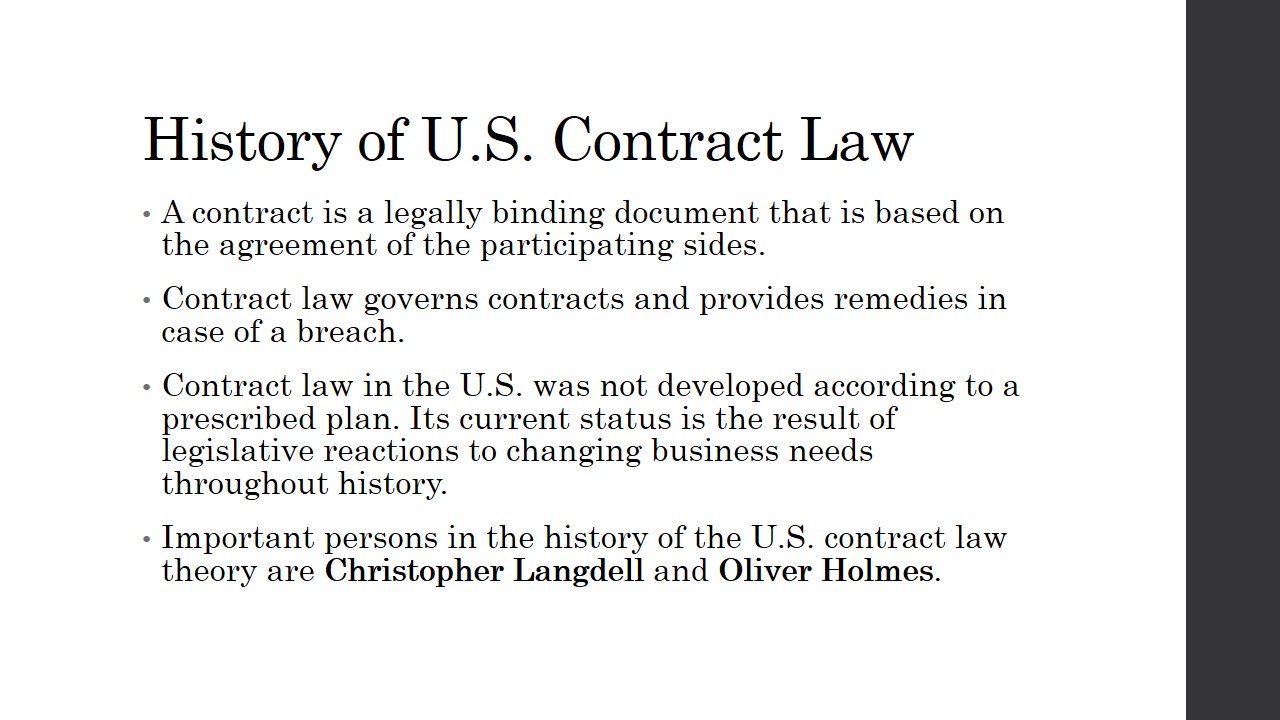
Sources of Contract Law
- Common Law.
- The Uniform Commercial Code (UCC).
- Federal courts, state law, and other courts.
The primary source of common law in the United States is a judicial precedent. In the U.S., the doctrine of judicial precedent, or stare decisis, is valid only within a particular state. Although courts often refer to court decisions in other states, these decisions are considered as only persuasive, but not binding. For certain aspects of the contract law, binding and enforcing laws are enacted, and they are considered to be more effective than judicial precedents. Of particular importance is the UCC, developed by the National Conference of Commissioners on Uniform State Laws (NCCUSL) in conjunction with the American Institute of Law (ALI), in order to replace uniform laws previously enacted in the U.S (See Howard Hunter, Modern Law of Contracts (2017)).
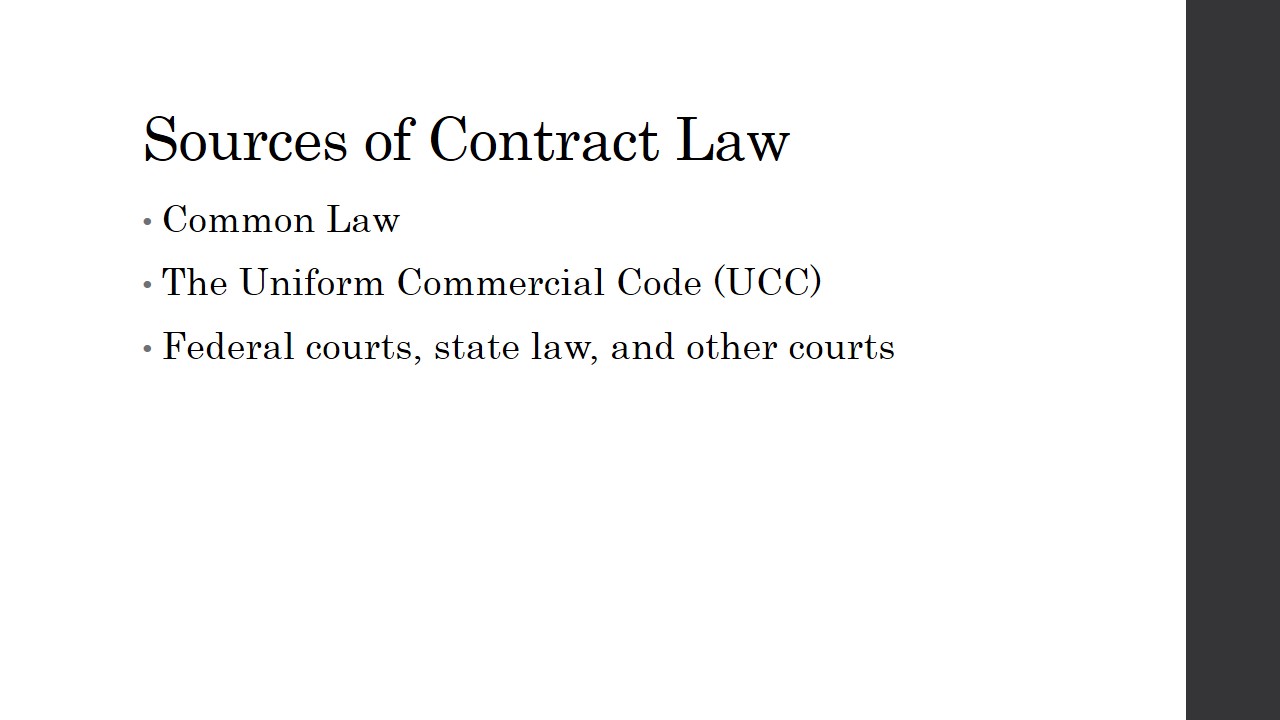
Common law
- Often referred to as “Case Law”.
- Governs contracts that involve the sale of real estate.
- Offerings of services are also governed by the common law:
- Contract for house cleaning services.
Judicial decisions and other relevant tribunals make up the body of the common law (See Roscoe Pound, The Spirit of the Common Law (2018)). It is critical that contracts that are governed by the common law contain all the necessary elements because the common law is more strict than the UCC. These elements include offer, acceptance, and consideration. If any single item is missing from the contract, the agreement is subject to be voidable. Common law governs contracts that involve the sale of real property and services. For instance, a contract for selling a house is protected by the common law. A contract for a “sale of a mobile home from a dealer” is subject to discussion, because it depends whether the mobile home will be movable or will have a fixed place of installation. In the latter case, the contract will be subject to the common law.
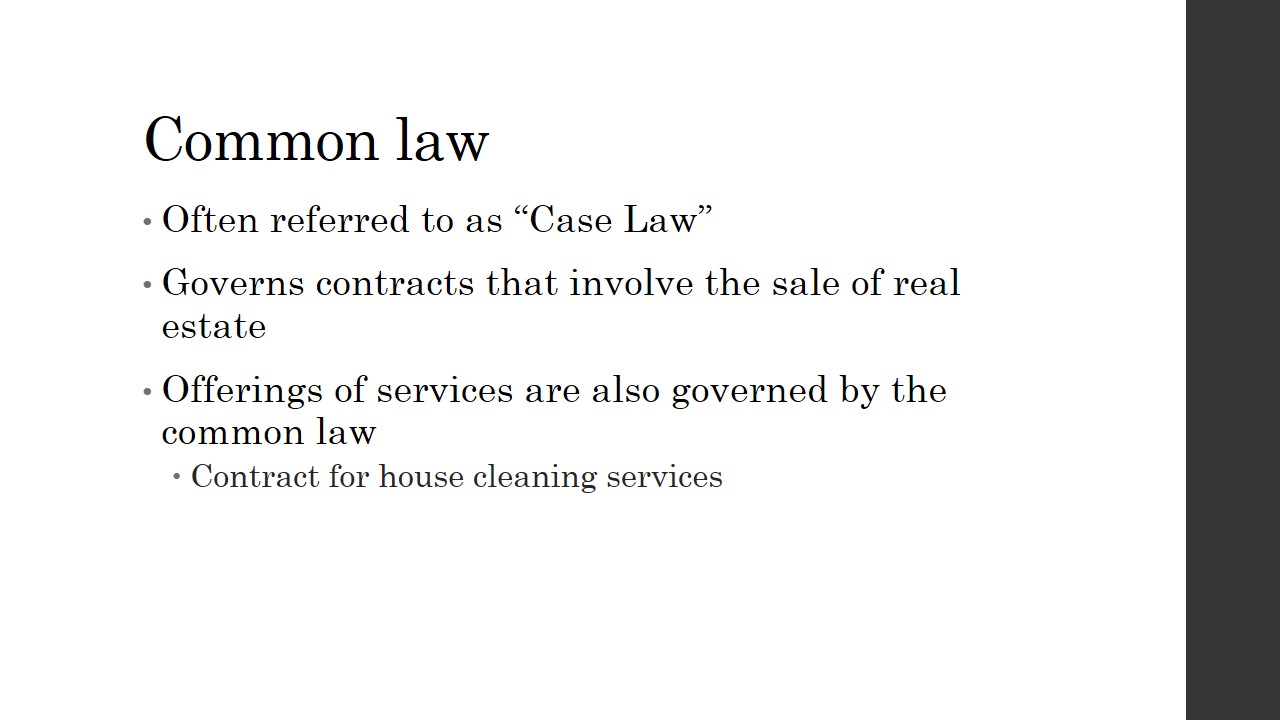
UCC
- Collection of recommended laws for states.
- States may enact the UCC laws verbatim or with specific changes that reflect the views of individual states.
- The goal is to harmonize the laws enacted in states.
- Uniformity and flexibility.
UCC is the product of private organizations with a goal to ease developing contracts among companies that reside in different states. The primary motivation behind the UCC was meeting the changing demands of the contemporary business world. Prior to UCC, different states had their own set of laws that governed contracts. Therefore, developing an agreement between two firms from different states was costly and involved sophisticated processes (See Aditi Ramesh, et al., CISG v. UCC: Key Distinctions and Applications, The Business & Management Review 459-468 (2016)).
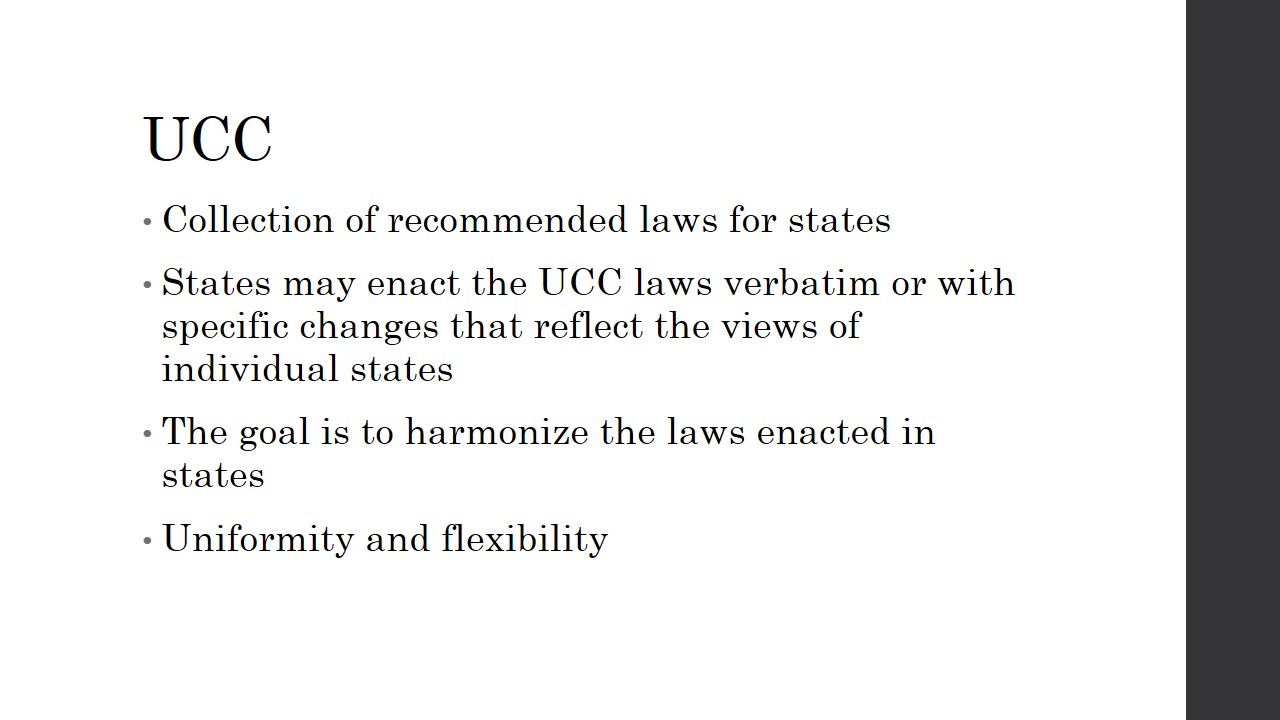
History of UCC
- A joint long-term project by ALI and NCCUSL.
- First version presented in 1952.
- Product of private organizations.
- Was drafted by leading scholars in legal area.
The authors began writing the first version of the UCC in 1942 and after a decade of work presented to the public. Therefore, it is considered to be the longest of uniform acts. Several revisions of the UCC were enacted with minimal changes by almost all of the states. In some cases, states chose to add little modifications to conform to local customs (See Howard Hunter, Modern Law of Contracts (2017)).
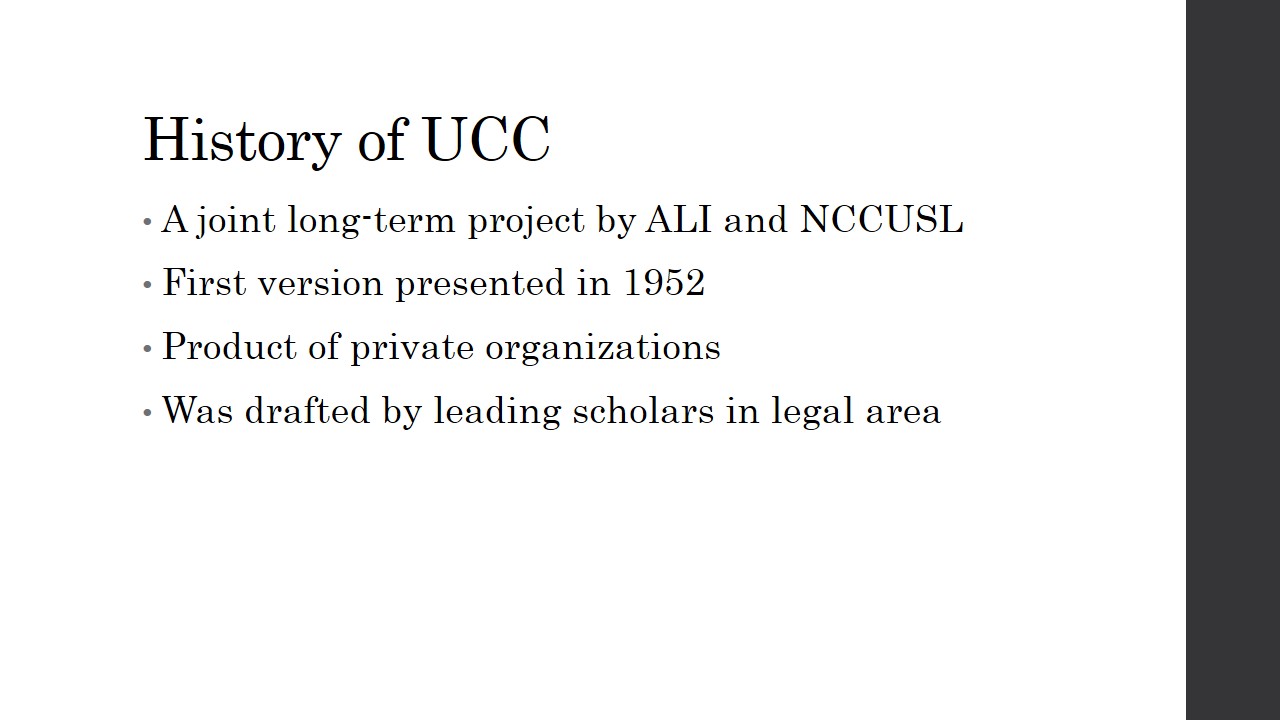
Organization of the UCC
- Concerns with 9 subjects.
- Each subject is dealt with an individual article.
- For instance, one of the most prominent articles, the Article 2 deals with sales of goods:
- Purchase of 1000 plastic knight figures from a toy manufacturer.
There are nine articles in the UCC, and they deal with a specific subset of transactions. For instance, Article 1 provides general provisions, while Article 2 deals with the sale of goods. Article 6 governs bulk transfers and bulk purchases, and Article 9 provisions for secured transactions. Some of the items have extensions as with Article 2 – Article 2A provides a set of laws to govern leases.
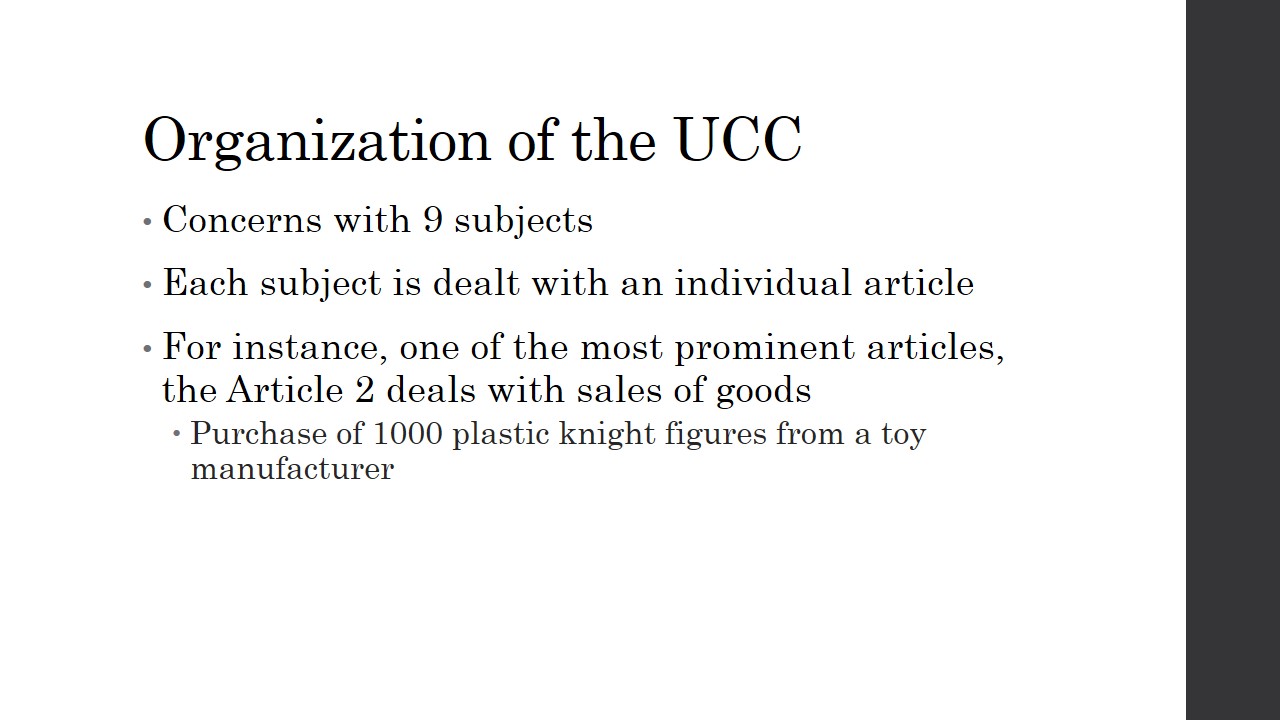
UCC Impact on Interstate Commerce
- Eased making contracts with firms from other states.
- Before UCC, making contracts with firms from other states was expensive.
- Companies have the flexibility to search for the best partners.
- Opportunity to pass cost savings to consumer.
The primary idea of the UCC is to allow individuals and businesses to make contracts with their own requirements and govern in areas where some details are implied and not indicated explicitly. Before the UCC, this was not possible and required the development of an elaborate and extensive contract that accounted for the laws of both states. Such a circumstance increased costs, and the price was eventually by customers (See Charles Knapp, Problems in Contract Law: Cases and Materials (2019)).
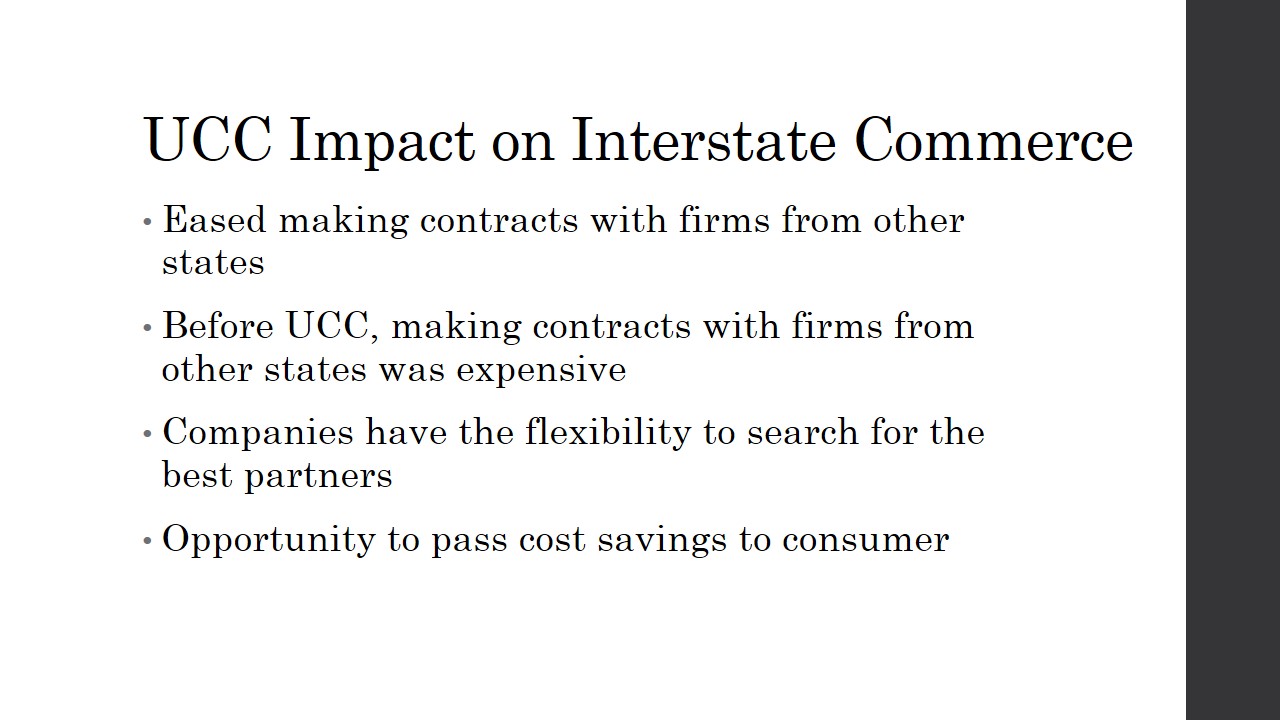
Conclusion
- Contract law is provisioned by common law if the transaction involves the sale of real property or service.
- UCC provisions the contract law if any other good is sold under a contract.
- UCC has many benefits:
- Flexibility for states;
- Flexibility and convenience for firms;
- Consumers pay less for goods.
Contract law in the U.S., while having some unique aspects, is similar to contract laws in other countries. The fundamental theory was laid by prominent jurists, and their idea was primarily based on the law theory of the United Kingdom. Today, the two primary sources for contract laws are common law and the UCC. The former governs the sale of real estate and services, while the latter provides for purchase and lease of other goods.
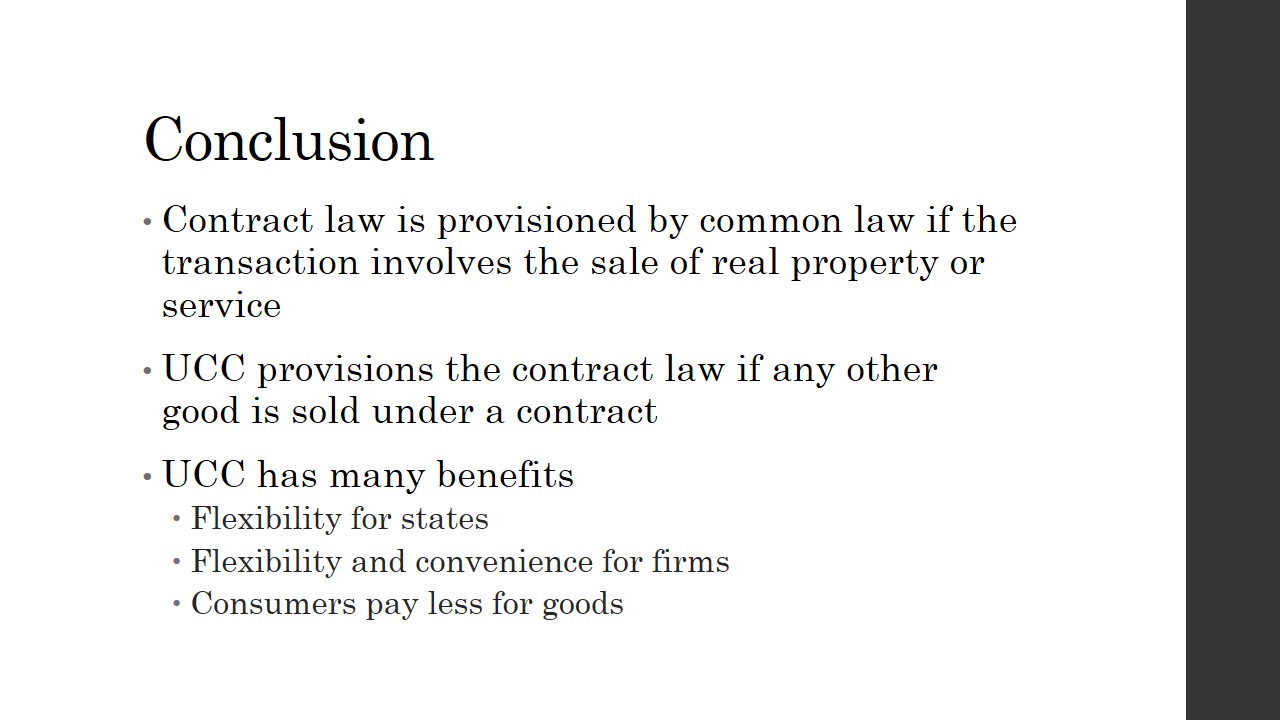
References
Aditi Ramesh, et al., CISG v. UCC: Key Distinctions and Applications, The Business & Management Review 459-468 (2016).
Charles Knapp, Problems in Contract Law: Cases and Materials (2019).
Howard Hunter, Modern Law of Contracts (2017).
Melvin Eisenberg, Foundational Principles of Contract Law (2018).
Roscoe Pound, The Spirit of the Common Law (2018).